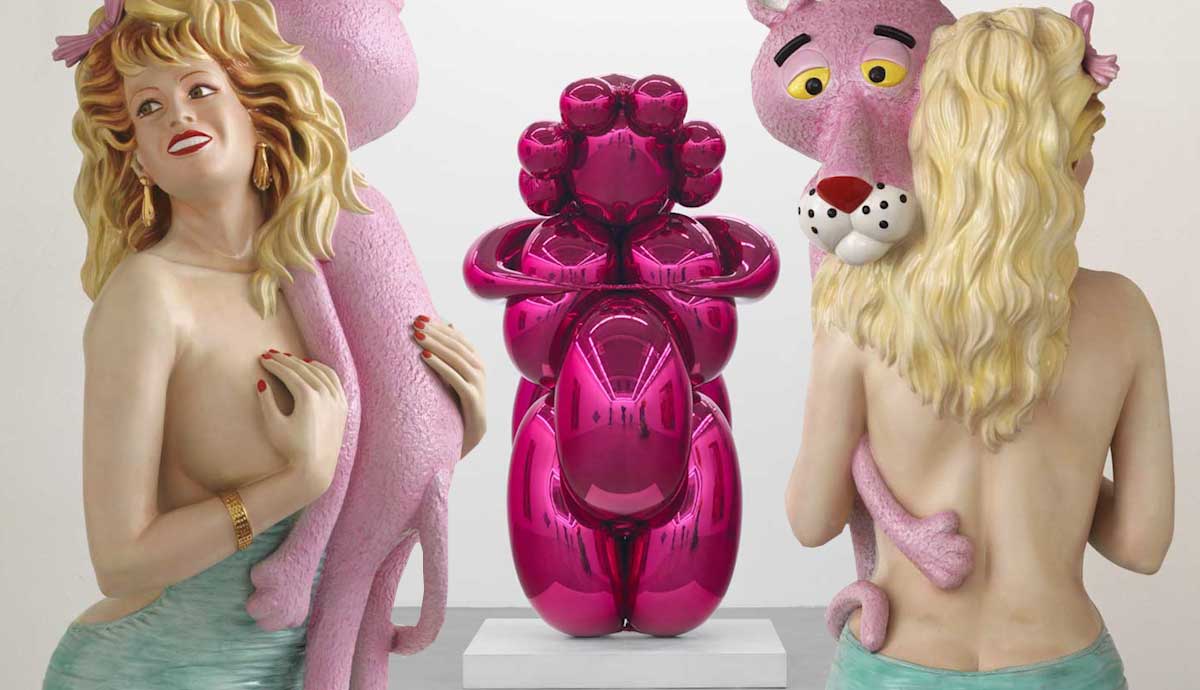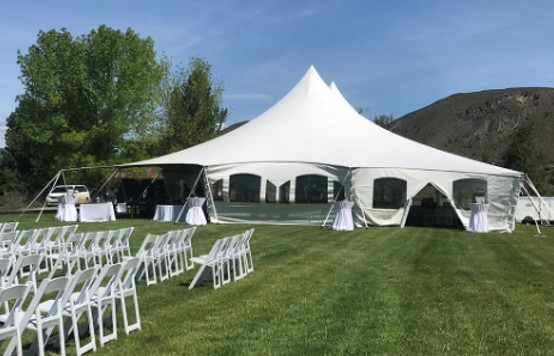At some point in time, many of us have been asked the question: what is art? Maybe all high school art history classes begin with the teacher asking a room full of pupils the very same inquiry, which can elicit blank stares or intense debate. There’s no right or wrong answer, though. Historically, to be an artist worthy of and eligible for inclusion in the Western canon required the male sex and to varying degrees, whiteness and privilege. All three of those unspoken requirements are met by the highest-paid living artist today, Jeff Koons.
Jeff Koons is a polarizing figure in contemporary art; often people either love him or hate him. Born in 1955 and hailing from York, Pennsylvania, Jeff Koons attended the Maryland Institute College of Art and following an eventful trip to the Whitney Museum, transferred to the Art Institute of Chicago. As the self-proclaimed “ideas man” behind controversial and at times infamous sculptures, paintings, and various fabrications, Koons has been forthright about his absence in the material production of his work. In a Meet the Artists interview, Jeff Koons vaguely explains the metaphysical allure of light and reflection.
Over footage of him walking through his studio in navy blue slacks and a pressed button-down shirt, he’ll use buzzwords here and there which all sound nice and elucidating without saying much of actual substance. It seems as though no one bats an eye at this deeply ironic scene. In other words, a work bearing Jeff Koons’ name is generally considered art.
Who Is Considered an Artist?
Get the latest articles delivered to your inbox
Sign up to our Free Weekly Newsletter
Wading into the waters of who is or isn’t an artist can get murky. This is in part due to the subjectivity of art and its historical and institutional problem of canonical gatekeeping. In that regard, let’s shift the inquiry elsewhere. Given that Jeff Koons has nothing to do with the material production of works that bear his name, can he really be considered an artist?
Do artists actually have to make their own art in order to call it their own? Perhaps this all belies a deeper issue at play. According to the contemporary economist and journalist Allison Schrager, “… the artists who thrive are those with the political savvy to court top galleries early in their career or brand themselves to become Instagram stars.” In the art world’s winner-takes-it-all market, those who succeed may not be the best artists or produce great work born out of the most original or creative ideas. Jeff Koons’ rise to fame owes more to a successful marketing scheme of business and controversy.
How Can the Renaissance help?
Despite his nonexistent contribution to the final material production of his work, a photorealistic painting like Lips or sculpture such as Pink Panther still credits Jeff Koons and Jeff Koons alone. Let’s say Koons is simply standing on the shoulders of giants like Marcel Duchamp, who is often considered the father of conceptual art. But just to stir the pot a bit, should the idea of something and its infinitely Instagrammable byproduct supersede the individual skills, competency, and training necessary to be an artist? Looking at the past can also be surprisingly enlightening. For another hit of sweet nostalgia let us venture forth through the storied history of art to the Northern Renaissance.
This may seem like a disparate comparison, but bear in mind the prevailing myth of an artist as a singular genius originated in the Renaissance. Much like their Italian counterparts, workshops flourished throughout Northern Europe. For context, in the introduction of their catalogue Early Netherlandish Painting, (1986), produced for the National Gallery of Art, John Oliver Hand and Martha Wolff note for the reader that studio or workshop attributions indicate a piece was, “Produced in the named artist’s workshop or studio, by students or assistants, possibly with some participation by the named artist. It is important that the creative concept is by the named artist and that the work was meant to leave the studio as his.” One such attribution is applied to the Tournai workshop of Robert Campin and one of the most celebrated and well-known early Netherlandish paintings, the Annunciation Triptych (Merode Altarpiece), (1427-28).
Robert Campin (1378/9-1444), commonly known as the Master of Flémalle, was a seminal figure in the Northern Renaissance. Along with his contemporary Jan van Eyck, Campin was credited with developing the naturalistic style of panel painting and significant attention to detail characteristic of the region and era. Although it’s undated and unsigned, stylistic and technical evidence suggests the altarpiece was made in stages over a five-year period, ca. 1427-32. The extent of Campin’s involvement in the production of the piece is unknown and it is generally believed he had two apprentices to assist him, namely Rogier van der Weyden and Jacques Daret.
In line with the Flemish tradition and general practice of the Northern Renaissance, the Merode Altarpiece is a glittering example of the union between the adept rendering of forms and imbuing them with meaning. As Erwin Panofsky states in his book Early Netherlandish Painting, (1953), “the more [Flemish] painters rejoiced in the discovery and reproduction of the visible world, the more intensely did they feel the need to saturate all of its elements with meaning. Conversely, the harder they strove to express new subtleties and complexities of thought and imagination, the more eagerly did they explore new areas of reality.” Though religion informed the symbolism and meaning of their works, the ideas behind a painting like the Merode Altarpiece were no less valid than the individualized ideas of artists today.
The exploration of form and conceptual function isn’t exclusive to contemporary art, nor is it a development born of the modern era at all. The only difference, perhaps, is the technical skill required of artists, buttressed by their assistants or workshops, to realize their ideas. That being said, it’s important to distinguish the division of labor from labor outsourced entirely. As an unintended myth birthed by the Renaissance, the paradoxical nature between the perception of an individual artist and the group mentality of a workshop is well documented. Though we use the same terminology, Jeff Koons’ workshop is not akin to a Renaissance workshop like that of Campin. The artistic masters of centuries past needn’t credit their students or assistants as the relationship between the artist and members of their workshop were mutually beneficial.
Following their time working with the Master of Flémalle, Van der Weyden and Daret went on to become artists in their own right. Campin’s stylistic influence is evident in his pupils’ work following their departure from his studio, as is the skill, growth, and experience gained as apprentices. Given the description of his studio as a factory setting, the relationship between Koons and his assistants appears rather exploitative, benefitting the former at the latter’s expense. With Koons’ system of outsourcing fabrication entirely, his ideas can only be produced with an unavoidable base level of exploitation. Regardless of Jeff Koons’ eloquence when ascribing social value and significance to any product of his factory, the meaning of a work, as its audience understands it, must take into consideration the method of its manufacture.
The Jeff Koons Brand & Problem of Authorship
For every work of art listed on his website, Jeff Koons receives both credit and copyright ownership. Though, much like an architect, the extent of Koons’ contribution to hands-on construction is null. Where an architect’s plan serves as a roadmap for the contractors hired to construct their design, Koons bears no responsibility for the technical ingenuity and proprietary knowledge of how his idea or concept is engineered. That part, like the manual labor bringing his ideas to fruition, is also outsourced.
This all begs the question: if Jeff Koons isn’t an artist then what is he? Simply put, there is no simple answer. What cannot be refuted is Koons’ excellent salesmanship and marketing skills. Can the same really be said for his artistic acumen? On one hand, the art world has definitively answered that question with a resounding yes. On the other hand, if we’re to take anything from conversations about de-colonizing art history in academic circles then we ought to probe not only the artist and their art but the way in which their art is produced.
Barring access to outsourced fabrication, Jeff Koons is another white man who successfully marketed himself as an artist whilst claiming the handiwork and labor of others as his own. It doesn’t take much self-reflection, be it figurative or a literal rose-tinted distortion staring back at a Balloon Venus viewer, to know that says more about consumerism than anything produced by a Jeff Koons studio.






More Stories
Special Tour “Painting History” Showcases Two Exhibitions at The Hood: “Historical Imaginary” and “Kent Monkman: The Great Mystery”
The Ambassadors by Hans Holbein the Younger | History Of The Painting
14 Groundbreaking African American Artists That Shaped History